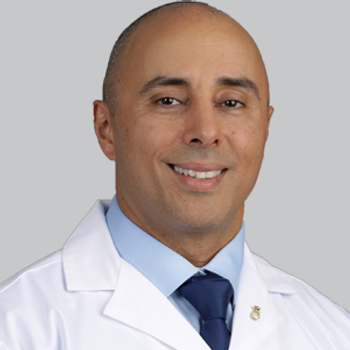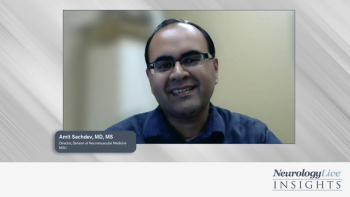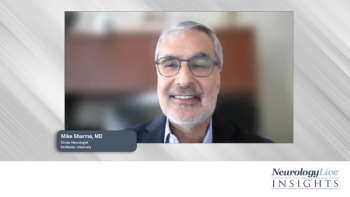
Ruptured vs Unruptured Aneurysms: Practical Decision Making with Guilherme Dabus, MD

The co-director of interventional neuroradiology at Baptist Health Miami Neuroscience Institute discussed decision-making for ruptured and unruptured aneurysm, endovascular and open outcomes, and training priorities for modern cerebrovascular care.
The treatment of intracranial aneurysms continues to evolve as endovascular technology advances and clinical data refine the safety and durability of these techniques. For stroke neurologists and cerebrovascular teams, decision making now often involves assessing not just the anatomy of an aneurysm, but also patient comorbidities, timing, and long-term risk when selecting between open and endovascular strategies.
In a new interview with NeurologyLive®, stroke expert Guilherme Dabus, MD, sat down to discuss the ways clinicians should approach ruptured versus unruptured aneurysms, noting how individualized anatomy and clinical context drive decision-making. Dabus, co-director of interventional neuroradiology at
NeurologyLive: On a general note, how do you approach surgical decision-making in ruptured versus unruptured aneurysms, especially with evolving endovascular technologies?
Guilherme Dabus, MD: These two scenarios are very distinct. Patients with unruptured aneurysms are typically seen in the office or hospital setting where we can have detailed discussions with them and their families about options. The treatment decision depends on aneurysm anatomy, location, and patient-specific clinical factors such as age, functional status, and comorbidities.
For these patients, we have a full range of choices—microsurgical clipping or several endovascular options. Within endovascular treatment, we can perform coiling, stent-assisted coiling, flow diversion, or intrasaccular flow disruption. Because these patients can be pretreated with dual antiplatelet therapy, stent-based procedures are often feasible and safe.
Ruptured aneurysms, on the other hand, are emergencies. Patients often cannot make their own decisions, and treatment must proceed quickly with family input. These cases are more complex because they usually are not pretreated with antiplatelets, which makes stent use riskier, particularly if an external ventricular drain or shunt is required. While stent use can still be done, we must balance the risk of thrombosis and bleeding carefully.
The important takeaway is that, for ruptured aneurysms, robust data show endovascular therapy generally carries lower morbidity and mortality. Whenever the anatomy is suitable, we prioritize an endovascular approach. Still, there are cases—such as ruptured, small, wide-necked MCA aneurysms—where clipping remains the best option, especially in younger, good-grade patients.
You mentioned clipping and bypass. Can you give an overview of the latest advances in microsurgical clipping, bypass, and other open vascular techniques that neurologists should know about?
Much of the major innovation in the last two decades has occurred in the endovascular space. Clipping and bypass techniques have improved incrementally in terms of instruments, visualization, and microsurgical precision, but the foundational approaches have not changed dramatically.
What matters most today is selecting the best technique for the specific patient. If the anatomy is favorable for an endovascular approach, outcomes are excellent, with procedure-related complication rates in the 3% to 5% range or lower. For example, in the PREMIER study for flow diversion, the rate of major complications was below 3%. Those are difficult numbers to beat.
This should not be viewed as a competition between surgical and endovascular specialists. The goal is collaboration—choosing the safest, most durable option for each patient’s unique presentation.
How do open and endovascular approaches compare in terms of recurrence, rebleeding, and long-term disability?
When you look at long-term data, particularly in ruptured aneurysms, endovascular therapy tends to have lower procedural morbidity and mortality. Clipping, however, may provide more durable occlusion for some aneurysm types. With modern endovascular devices, especially flow diverters, durability has improved dramatically, and recurrence is now rare when the aneurysm is fully occluded.
In ruptured aneurysms, the literature shows that rebleeding risk is slightly higher after endovascular treatment compared with clipping, though the absolute difference is small and often not statistically significant. The endovascular approach remains less invasive and overall safer in most cases. The key is understanding that both methods have their place, and decisions must be patient- and anatomy-specific rather than based on a single metric.
From a training and education standpoint, what areas are most critical as the field balances open and endovascular approaches?
Training is highly structured but varies by discipline. Cerebrovascular surgeons complete neurosurgical residency and often pursue additional fellowships focused on vascular surgery. Endovascular training, by contrast, can originate from neurology, neurosurgery, or radiology, followed by formal neurointerventional fellowships.
Maintaining uniform training standards and credentialing is vital. Organizations like the Society of NeuroInterventional Surgery (SNIS) and the Committee on Advanced Subspecialty Training (CAST) oversee certification to ensure that trainees achieve appropriate competency. On the surgical side, the American Board of Neurological Surgery and the AANS/CNS Cerebrovascular Section set the requirements for aneurysm clipping and related open techniques.
We also see many neurosurgeons trained in both microsurgical and endovascular procedures. They are invaluable to multidisciplinary teams, bridging the gap between the two approaches. Ultimately, the goal is not to favor one pathway but to ensure all are producing skilled, high-quality operators who can collaborate effectively to deliver the best outcomes for patients.
Newsletter
Keep your finger on the pulse of neurology—subscribe to NeurologyLive for expert interviews, new data, and breakthrough treatment updates.


































